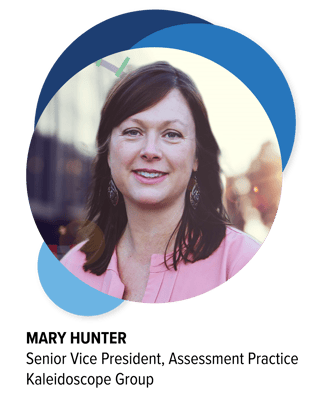Tailoring Your DEI Strategy to Your Business: An Integrated Approach
Diversity, equity, and inclusion (DEI) has reached an inflection point. DEI came into the spotlight in 2020 on the heels of the George Floyd protests and increased public awareness of racial and gender equity gaps in the workplace and society in general. As a result, many organizations raced to increase their DEI efforts. In fact, the global market for DEI, which was estimated at US $7.5 Billion in 2020, is now projected to reach $15.4 billion by 2026.
However, despite initial enthusiasm and public commitment by corporations large and small, the momentum behind DEI efforts in the workplace is beginning to slow amidst political and economic pressures. With talk of recession looming and layoffs plaguing multiple industries, DEI is often the first on the chopping block. A recent survey by Monster found that 11% of employers said that DEI programs “are among the first to go when they are forced to cut costs,” second to company events and bonuses.
This points to a broader issue DEI professionals and their supporters must tackle: demonstrating DEI’s strategic business value.
Of course, DEI is the right thing to do. But when money is on the table, business leaders are focused on the numbers. So your DEI efforts must connect to both the business value as well as the human value.
So, how can you make the business case for DEI? By ensuring you have a strong DEI strategy that is customized to the needs and goals of your business.
Below we’ll break down what a DEI strategy is, the basic framework for a DEI strategy, and how to tailor that strategy to your business.
|
Quantum Workplace and The Kaleidoscope Group partner to provide our clients access to enhanced employee listening, performance feedback, workforce analytics, and deep subject matter expertise in Diversity, Equity, and Inclusion (DEI). Quantum Workplace’s employee success platform empowers organizations to understand and improve employee experience, inspire employee impact, and create a magnetic culture. The Kaleidoscope Group is a full-service DEI consulting firm with 30 years of proven experience guiding clients through organizational transformation through tangible DEI actions. |
What is a DEI Strategy?
A DEI strategy builds on your organization’s mission and values to integrate diversity, equity, and inclusion practices into the fabric of the business. A successful DEI strategy promotes a safe and inclusive work environment that is equitable for all employees regardless of age, race, ethnicity, gender, or identity.
A DEI strategy follows a simple framework:
- Align leadership
The first step is to get alignment from leadership and stakeholders on the purpose of DEI, current organizational values, and the key roles leadership will take in the initiative. - Define the vision for DEI
Once you have stakeholder alignment, you can define the organization’s vision for DEI. - Assess the current state
With your vision in mind, you can assess how close your organization is to achieving that vision. What are the strengths and weaknesses? Where are there gaps or room for improvement? These are the areas you will need to focus on in your strategic plan. - Develop a strategic plan
Finally, develop a strategic plan that supports your vision and focuses on the strengths and gaps identified in the assessment to prioritize implementation activities that will drive impact.
Importance of a Tailored DEI Approach
A DEI strategy shouldn’t be “cut and paste.” This is because every organization is different. From the people to the culture to the overall goals of the business. So the DEI strategy at one organization can and should look different from the DEI strategy at another.
If you are simply applying a general strategy to your organization, it is less likely to have the impact and success you’re trying to achieve.
A successful DEI strategy is tailored to the specific needs and goals of your organization. This allows you to target your efforts, measure them against clear benchmarks, and demonstrate the positive impact on the business. And when you can show that your strategy is working, you can make the case for ongoing investment and support from leadership. This is the key to sustainable DEI.
Too often, leaders focus on one-time, popular DEI initiatives, training, or checklists based on what everyone else is doing. But that's the easiest way to lose your DEI support because it won't have a lasting impact on your organization.
Tailoring your DEI strategy makes it relevant to what your organization is trying to achieve now so that it's a tool to help you achieve business success long-term.
How to Tailor Your DEI Strategy
While every DEI strategy follows the same basic framework, each strategy should look different based on the unique goals of your business and makeup of your employees.
1. Align leadership
The first step to building a DEI strategy is leadership alignment. Without buy-in from the very top, it will be difficult to plan and implement a successful, and sustainable, DEI strategy.
Review the current business plans, organizational goals, and business landscape. Consider questions like:
- What are the core values of the organization? What is your mission?
- What challenges are top of mind? (e.g., attrition rates, talent acquisition, low engagement, etc.)
- What are your current perspectives on DEI?
- How do you see DEI fitting into the business?
- What are the core priorities that you’ll be focusing on for the business in the next few years?
- What do you see as your role in DEI?
This information will provide important context for defining the vision for DEI. It helps establish a) what problems the business has now and b) how DEI can help bridge the gap from where you are to where you want to be. Answering these questions also sets the direction for your vision in a way that is specific and relevant to the needs of the company and the people who work there.
2. Define your vision for DEI
With your leadership aligned on the purpose of DEI and the organization’s core values and mission, you can then start drafting your unique vision for DEI in your business.
Formalizing a vision for DEI is an important step. Your DEI vision is a rallying cry to inspire and motivate, and to align on what you aspire to be or seek to achieve. It serves as the north star to guide the organization as it contemplates strategy and action planning.
Your DEI vision should flow naturally from the overarching vision of the organization. This will ensure it is relevant and integrated into the core values and culture of the business. Keep in mind, you should be drawing inspiration for your vision from your own organization—not looking outward at what other businesses are doing. This is key to tailoring your DEI vision, and, ultimately, your DEI strategy to your organization.
It all ties back to the core questions you should have answered in step one:
- Who are we as an organization?
- What are we trying to achieve?
- What's stopping us from getting there?
Leadership should be involved at this stage as well so they have ownership of the DEI vision. This will reinforce their commitments in the first stage to their role in DEI and keep them accountable to the outcomes.
3. Assess the current state
Evaluate how your organization is currently performing against your stated vision. Where are you falling short? Get your finger on the pulse of your culture and what employees are thinking.
To do this, you need good data on the employee experience to really understand what is working, what isn’t working, and what the employee landscape actually looks like. This is where employee listening and HR analytics come in.
Employee engagement and DEI surveys can help you drill down to what people are experiencing on the ground. And HR analytics can track the outcomes.
For example, let’s say you work at a small but rapidly growing company in a tight-knit community. The original workforce all lives in the same area and has a similar culture and background with common shared experiences. But as you’ve grown, your business has expanded to other regions—perhaps you’ve opened roles to remote work. These changes have a big impact on the business and employee culture. New hires might not feel like the organization is very inclusive if they don’t have that same shared background. This can affect engagement and, ultimately, retention and recruitment rates.
But you won’t know until you measure it. So take time to really investigate your current state in the context of your specific vision, goals, and challenges.
4. Develop a strategic plan.
Once you have a vision of what or who you want DEI to help you become, and an understanding of the current state of your DEI landscape, you can develop a strategic plan to move you toward your goals. Use the data and insight from your assessment guide action planning. This will ensure your efforts are most likely to have the impact needed to support strategic success. And be sure to include critical implementation steps such as operational or action plans that include goals, KPIs, and assign roles and responsibilities.
If you’re struggling to get the alignment or focus you need, don’t be afraid to bring in outside help. DEI experts can facilitate the conversation with leadership to help develop a vision that connects to your business, then use data to drive decisions about where to focus. And solutions like Quantum Workplace can support your data-gathering efforts to understand your employee experiences and build a culture of feedback that sustains a healthy DEI strategy.
About the authorMary founded and built The Kaleidoscope Group’s Assessment and Analytics practice. She has led the development of key DEI analytics solutions and guides clients to greater clarity on what matters most and how to use data-driven insight to ensure DEI efforts positively impact business strategy execution and organizational effectiveness. Prior to joining The Kaleidoscope Group in 2016, Mary spent 13 years in consumer insights, working with primarily Fortune 500 companies to design and execute custom research solutions to guide product and marketing decisions. Mary earned a Master of Arts degree in arts administration from New York University and a Bachelor of Arts degree in art history from the University of Nebraska-Lincoln. She has pivoted more than once in her career, so has first-hand experience with the power of combining transferable skills with an adventurous spirit and boundless curiosity. |

|






